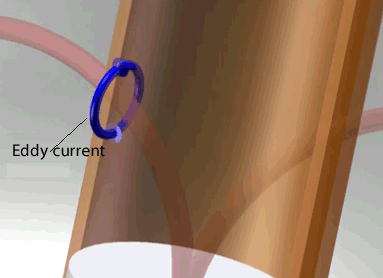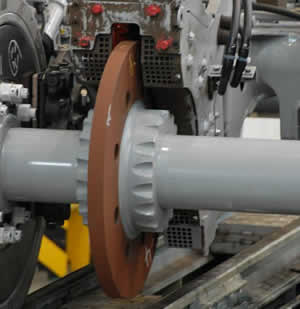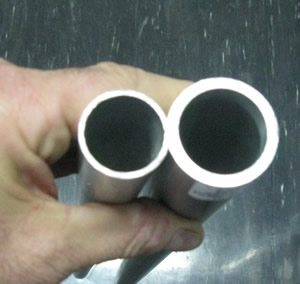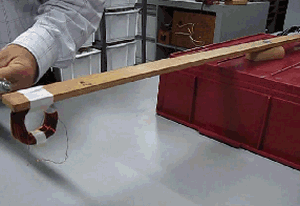Defying gravity
Using Faraday's Law and Lenz's Law

The explanation to this amazing anti-gravity trick lies with Faraday and Lenz.
Faraday stated that, any change in the magnetic environment of a coil of wire will cause a voltage to be "induced" in the coil. The copper tube can be thought of as infinite loops of copper wire. No matter how the change is produced, a voltage will be generated. The change could be produced by changing the magnetic field strength, moving a magnet toward or away from the coil, moving the coil into or out of the magnetic field or rotating the coil relative to the magnet..
This is how a generator works. Coils of wire are spun around a changing magnetic field. This produces a current in the coils of wire.

The stronger the applied magnetic field, or the greater the electrical conductivity of the conductor, or the faster the field changes, then the greater the eddy currents that are developed and the greater the magnetic fields produced.

A current flowing through a conductor will produce a magnetic field. Eddy currents produce their own magnetic field that opposes the change which produce them. The induced magnetic field inside the copper tube acts to oppose the change in magnetic field that caused it and in doing so acts against the moving magnet inside the tube.
The creation of induced currents such that their magnetic field opposes the initial change that created them is known as Lenz's Law.
Construct an electromagnet. Use it to perform a trick involving levitation or any other trick that involves magnets.
What factors increase the eddy currents?
Using the table of properties of different metals suggest which metal would be better suited to perform this trick and explain why?
Eddy currents can be used for braking systems. Eddy current brakes are used to slow roller coaster carts. The geometry of the copper and magnet is not limited to a magnet moving down a tube. As you can see from the braking system shown on the right, a copper metal moving through two magnets will also induce eddy currents and slow the wheel down.
What advantage does this braking system have over conventional friction brakes?
Are the magnets shown on the right permanent magnets or electro-magnets? Explain
Are eddy current brakes limited to certain types of uses? Explain with examples of situations where eddy current brakes are not suitable.

Design investigations to answer the following questions.

A magnet is passed through closed loops of copper wire without touching the sides. The lever starts to move.
The lever moves only when the magnet is moving through the coil of wire.
What is happening when a magnet is moved through the coils of wire?
What happens when the magnet is not moving through the coils of wire?
What happens when the magnet is pulled back out from the loop?

The closed loop of copper wire is connected to a galvanometer as shown on the video on the right.
Describe what you see when the magnet passes through the loop.
A current is generated in the loop when
What do you notice when the magnet is pulled back out of the loop?
What does the direction of the current, as indicated by the deflection of the needle, depend on.
Consider the video on the right.
What is alternating current? From what you know about loops of wire and magnets explain how alternating current is generated.